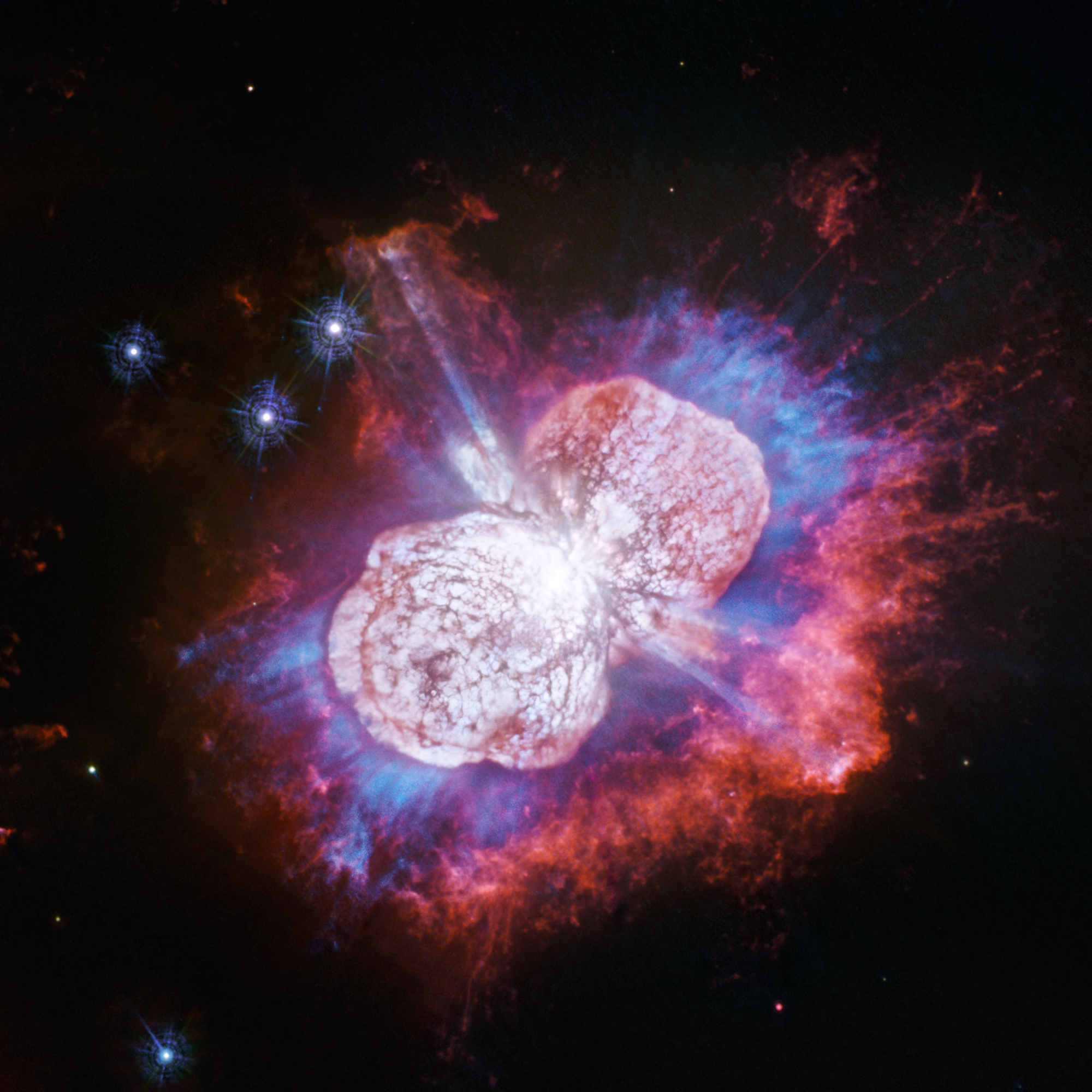Hubble Captures Stunning Fireworks of Exploding Star
The supermassive star first erupted in the 1840s.

The Hubble Space Telescope caught one spectacular show as the outburst of a supermassive star glows in bright, exploding fireworks.
The star, called Eta Carinae, first erupted 170 years ago and was the second-brightest star in our sky for a little more than a decade. However, over time, the star has slowly faded and become harder to see with the naked eye.
Hubble has observed the star for 25 years, according to a statement by NASA. Most recently, astronomers used its Wide Field Camera 3 to map the ultraviolet light glow of magnesium embedded in warm gas, and found the gas in places where it had not been before.
Related: The Best Hubble Space Telescope Images of All Time
"We had used Hubble for decades to study Eta Carinae in visible and infrared light, and we thought we had a pretty full accounting of its ejected debris," Nathan Smith, a researcher at the Steward Observatory at the University of Arizona and lead investigator of the Hubble program, said in the statement. "But this new ultraviolet-light image looks astonishingly different, revealing gas we did not see in other visible-light or infrared images."
This newly discovered gas may have been ejected from the star right before it expelled the bipolar lobes on either of its sides, and is therefore crucial in understanding how the star's eruption began, according to a statement by NASA.
"This extra material is fast, and it 'ups the ante' in terms of the total energy for an already powerful stellar blast," Smith added.
Get the Space.com Newsletter
Breaking space news, the latest updates on rocket launches, skywatching events and more!
Eta Carinae is known for its eruptions, which may be due to there being three stars being gravitationally bound within the same system, and will likely die in a supernova explosion, according to NASA.
- Hubble Telescope Reveals What 200 Billion Stars Look Like (Photos)
- Mystery of Strange Star Outbursts May Be Solved
- Hubble Spots Gassy Objects Jetting Away From Newborn Star
Follow Passant Rabie on Twitter @passantrabie. Follow us on Twitter @Spacedotcom and on Facebook.
Join our Space Forums to keep talking space on the latest missions, night sky and more! And if you have a news tip, correction or comment, let us know at: community@space.com.

Passant Rabie is an award-winning journalist from Cairo, Egypt. Rabie moved to New York to pursue a master's degree in science journalism at New York University. She developed a strong passion for all things space, and guiding readers through the mysteries of the local universe. Rabie covers ongoing missions to distant planets and beyond, and breaks down recent discoveries in the world of astrophysics and the latest in ongoing space news. Prior to moving to New York, she spent years writing for independent media outlets across the Middle East and aims to produce accurate coverage of science stories within a regional context.









